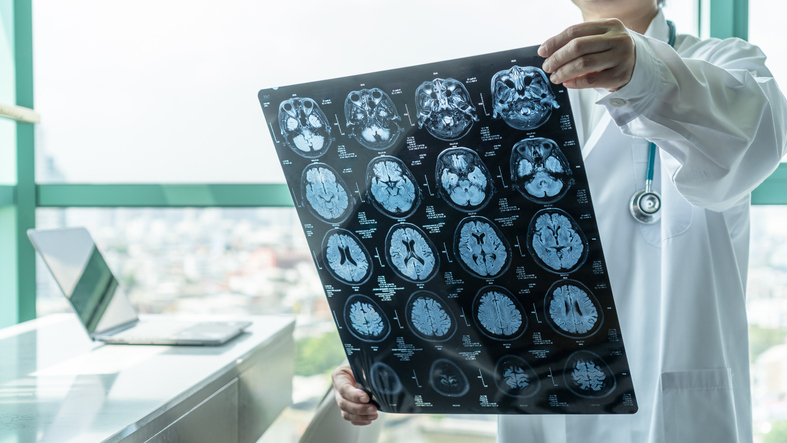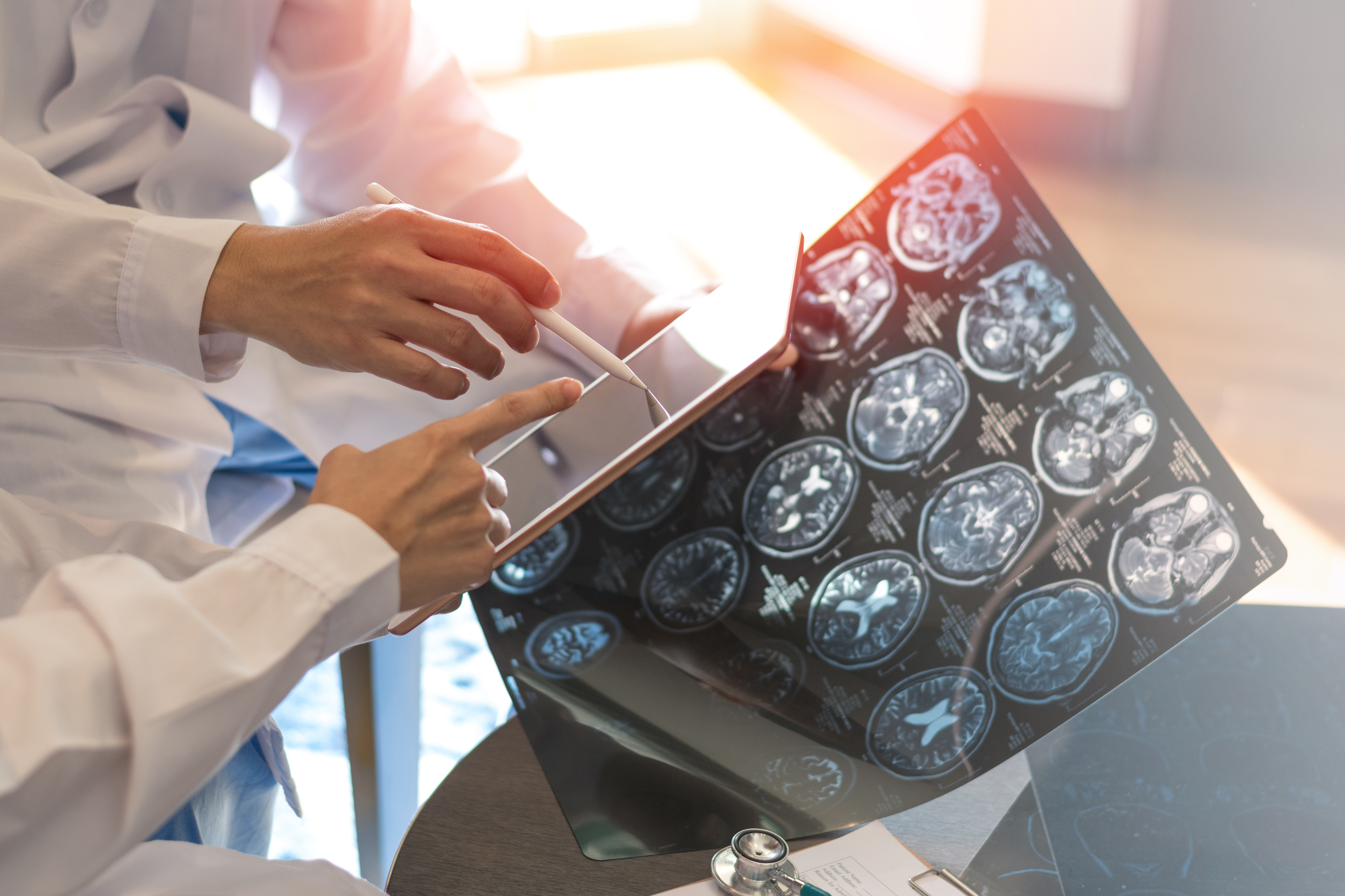
Highlights from ICAMS 2022
Latest updates in migraine research and management: Highlights from ICAMS 2022
The first International Conference on Advances in Migraine Sciences (ICAMS) was held in Copenhagen from the 10th to 12th of March 2022. The conference focused on research, with an aim of understanding the disease mechanisms underlying migraine and ascertaining best practices for clinical management.
KEY SESSIONS
Functional MRI in migraine
Faisal M. Amin (Copenhagen, Denmark) explained that ongoing neuroimaging research is aiming to identify biomarkers for migraine and better understand migraine pathophysiology. Task-based functional magnetic resonance imaging (MRI) is a promising technique in the field of migraine research, as it allows clinicians to visualise the active areas of the brain while a patient conducts specific tasks. Over the past 5 years, task-based functional MRI has identified that migraine is associated with: hypothalamic hyper-excitability in the prodromal phase, visual cortex hyper-excitability during visual aura and the postdromal phase, and disrupted coupling of ascending pain pathways during headache.
Understanding cortical spreading depression by neuroimaging: Pearls and pitfalls
An alternative technique, diffusion MRI, was described by Mihika Gangoli (Maryland, USA). Diffusion MRI can measure microstructural alterations in brain tissue by observing the restriction of water diffusion caused by transient cellular swelling. This is a potential technique for studying cortical spreading depression (CSD), which is a wave of sustained depolarisation that spreads through intact brain tissue and is associated with migraine. Gangoli explained that diffusion MRI was being used by the Center for Neuroscience and Regenerative Medicine to study CSD in patients with concussive-type traumatic brain injury who experience chronic post-traumatic headache.
The economic and personal burden of cluster headache: Young Investigator Poster Session
Anja Sofie Petersen (Copenhagen, Denmark) explained that although cluster headache is less prevalent than migraine or tension headache, it is overrepresented with regards to the use of healthcare and social services. Results were presented from a survey of patients with chronic (n=146) or episodic (n=253) cluster headache. Chronic cluster headache was found to be three times more costly than episodic cluster headache (mean annual cost per patient of 20,051 EUR vs 6321 EUR, respectively). In addition, the survey reported that patients with chronic cluster headache were more severely impacted in both their personal and professional lives compared with those with episodic cluster headaches. More than 40% of patients with chronic cluster headaches were without work, and 40% were dependent on family and friends for help and support. Outcomes from this survey highlighted the need for more effective therapies to lighten the burden on society.
Prevalence of neck pain in migraine: A systematic review and meta-analysis
Haidar Muhsen Al-Khazali (Copenhagen, Denmark) presented findings from a systematic literature review and meta-analysis of neck pain in patients with migraine. Neck pain was twelve-times more prevalent in patients with migraine (77%) than patients without a headache disorder (23.2%). Patients with CM were also twice as likely to experience neck pain than those with EM.
KEY INTERACTIVE DEBATES
“Migraine attacks are of peripheral origin”
Thien Phu Do (Copenhagen, Denmark) presented arguments for the motion, explaining that evidence suggests that migraine pain is associated with vasodilation, rather than brain tissue itself. Additionally, migraine can be both provoked and treated systemically and the blood-brain barrier remains intact during migraine attacks. In opposition, Anders Hougaard (Copenhagen, Denmark) argued that pain is only one of the symptoms associated with migraine and the initial event in a spontaneous migraine attack occurs in the central nervous system. He proceeded to explain that neuroimaging has shown that brain activity is altered during the prodromal phase of a migraine, and the characteristics of aura symptoms imply that they originate from the cerebral cortex. Following the points set forth by the panel, 71% of attendees voted that migraine attacks were not of peripheral origin.
“Migraine and cluster headache are two distinct disorders”
Anja S. Petersen (Copenhagen, Denmark) agreed with the motion, stating that the clinical presentations of cluster headache and migraine are distinct as pain during a cluster headache is strictly unilateral and retro-orbital, whereas migraine pain is felt more diffusely. There are also differences in symptoms, patient subgroups and treatment: aura is strongly associated with migraine, but autonomic symptoms are a hallmark of cluster headache; migraine is far more prevalent than cluster headache and it is more likely to occur in women; and inhibition of the parasympathetic outflow can be used to treat a cluster headache attack but not a migraine attack. Kuan-Po Peng (Hamburg, Germany) disagreed, arguing that both disorders share a core set of symptoms, including unilateral pain of severe intensity, allodynia, photophobia, phonophobia, interictal sensitivity, and cranial autonomic symptoms. Additionally, he explained that pain in both migraine and cluster headache is preceded by other symptoms and hypothalamic hyperactivity has been observed in both disorders. Following the points set forth by the panel, 70% of the audience voted that migraine and cluster headache were two distinct disorders.
“The premonitory phase of migraine is due to hypothalamic dysfunction”
Cédric Gollion (Copenhagen, Denmark) was for the motion, arguing that that: prodromes are strongly associated with the period immediately preceding a migraine attack and chronobiology of this kind is led by the hypothalamus; premonitory migraine symptoms relate to functions of the hypothalamus, such as appetite, stress, and mood; and neuroimaging supports the involvement of the hypothalamus at the early stages of a migraine attack. In contrast, Roberto De Icco (Pavia, Italy) stated that the prodromal phase phenotype has not been adequately defined and there is a lack of reliable evidence to support a correlation between prodromal symptoms and hypothalamic activity from functional neuroimaging studies. Following these opening arguments, 55% of participants voted against the motion, indicating that opinion was divided regarding hypothalamic dysfunction as the cause of the premonitory phase of migraine.
כתבות נוספות שאולי יעניינו אותך
רוצים להמשיך לקרוא?
הירשמו עכשיו בקלות ובמהירות לאתר התוכן של טבע ישראל לקהל הרפואי ותקבלו גישה לכל התכנים
להרשמהאת.ה עומד.ת לעזוב את העמוד
האם את.ה בטוח.ה?



